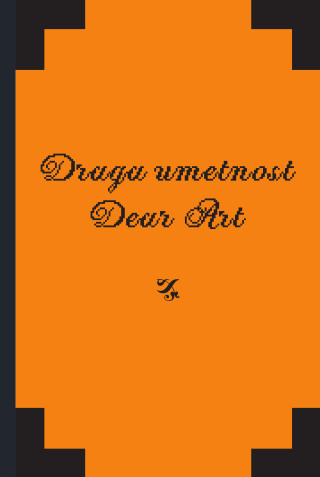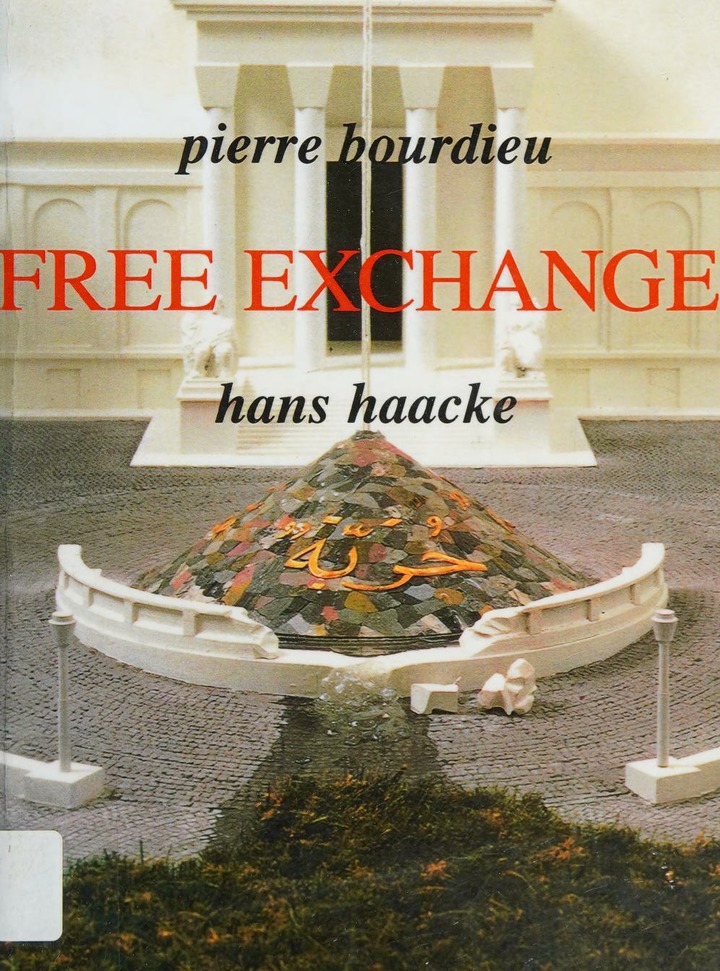What, How and for Whom (eds.): Dear Art (2012)
Filed under booklet, catalogue | Tags: · art, art system, autonomy, contemporary art, institutional critique

“Dear art,” Mladen Stilinović wrote in 1999, “I am writing you a love letter to cheer you up and encourage you to come and visit me some time”. Always acutely aware of his own complicity and involvement, in his address to art Stilinović intimates a set of troubled, poetic, enigmatic and modest observations on the standing of art in the contemporary world, its reception and distribution. But he also questions the value of art, which far too often is translated exclusively in monetary terms, or as he puts it: “quick manipulation, quick money, quick oblivion”.
As in several previous shows curated by What, How and for Whom/WHW, Dear Art takes its title from a work by Mladen Stilinović, and once again its wager is set on the “classical” exhibition format. Amidst the disillusionment created by the persistent feeling of failure (coming from the fact that attempts for a radical reconfiguration of art and cultural production in general always become almost immediately spectacularized), Dear Art insists on the obstinate repetition of what has become the curatorial method. Obsessed with the interconnectedness of art and politics and plagued by the nature of art’s “inefficiency,” it attempts to ask necessary questions: Why do we still need art, and what is it that we expect to get from art today? What is its promise, and what do we promise it in return? And what happens when this promise is broken, betrayed, and just plain exhausted?
“Dear Art” approaches questions of the artist’s autonomy and art’s necessity through works that deliberately blur the relationship between engagement, self-referentiality and aesthetics. Engaged with a range of contradictory, heterogeneous methods that affirm endurance, endure indecisiveness, face misunderstandings and reassert allegiances, the works included address the ways in which misunderstanding, confusion, regret, possession, appreciation and devaluation, support and solidarity play out in contemporary art practice, and in defining one’s practice in relation to discussions on reconfiguring the field of art and its relationship to the political.
The exhibition is accompanied by a publication, with texts by Mladen Stilinović, WHW and Stephen Wright, featuring works by Mounira Al Solh & Bassam Ramlawi, Halil Altindere, Rossella Biscotti, Chto delat?, Every Man is a Curator / Jeder Mensch ist ein Kurator. An archive as a tool, Fokus grupa (Iva Kovač & Elvis Krstulović), Siniša Ilić, Sanja Iveković, Janez Janša, Janez Janša, Janez Janša, Lutz Krüger, Marina Naprushkina, Hila Peleg in collaboration with Tirdad Zolghadr & Anton Vidokle, Cesare Pietroiusti, Public Library (Luka Prinčič, Marcell Mars, Tomislav Medak, Vuk Ćosić), Greg Sholette, Mladen Stilinović, and Wendelien Van Oldenborgh.
Publisher Moderna galerija, Ljubljana, November 2012
56 pages
exhibition (29 November 2012 – 10 February 2013, Museum of Contemporary Art Metelkova, Maistrova 3)
Comment (0)Pierre Bourdieu, Hans Haacke: Free Exchange (1994–)
Filed under book | Tags: · art, censorship, contemporary art, institutional critique, multiculturalism, sociology, sociology of art

“How can we affirm the independence of critical artists and intellectuals when confronted by the new crusaders of Western culture, the neoconservative champions of morality and good taste, the sponsorship of multinationals and the patronage theorists who have lost all touch with reality? How can we safeguard the world of free exchange which is and must remain the world of artists, writers and scholars?
These are some of the questions discussed by the leading social thinker Pierre Bourdieu and the artist Hans Haacke in this remarkable book. Their frank and open dialogue on contemporary art and culture ranges widely, from censorship and obscenity to the social conditions of artistic creativity. Among the examples they discuss are the controversies surrounding the exhibition of photographs by Robert Mapplethorpe and Andres Serrano, the debates concerning multiculturalism and ethnic diversity, and the uses of art as a means of contesting and disrupting symbolic domination. They also explore the central themes of Hans Haacke’s work, which is used to illustrate the book.
Free Exchange is a timely intervention in current debates and a powerful analysis of the conditions and concerns of critical artists and intellectuals today.”
First published in French as Libre-échange, Éditions de Seuil/les presses du réel, 1994
Publisher Polity Press, Cambridge, UK, in association with Blackwell Publishers, 1995
ISBN 0745615228, 0745615228
144 pages
Reviews: Jennifer Peterson (Chicago Review), Vincent Dubois (Politix, FR).
PDF (no OCR, black&white)
PDF (no OCR, added on 2023-8-10)
Eastside Projects User’s Manual Draft Five (2012)
Filed under manual | Tags: · art, institutional critique, organization, self-organization

Organisations do not often provide user’s manuals. This is the fifth draft user’s manual for Eastside Projects. It explains what the organisation is made of, how it was set up, who it is for, how it can be used and what it can offer. As would be the case when operating a machine or learning a subject, a manual may be necessary for the full use of of Eastside Projects. In this draft, the manual is structured as an alphabetical compendium of verbs. Each of these interconnected entries describes an activity engaged in by Eastside Projects as an organisation or a process occurring in the Eastside Projects building. Beneath each entry is a prompt to the reader to follow one of multiple narrative paths through the text. Readers unfamiliar with Eastside Projects should begin at Describing. Others suggested starting points Welcoming, Exhibiting, Narrating, Complicating, integrating.
Edited and designed by James Landon
with Gavin Wade, Celine Condorelli, Simon & Tom Bloor, Ruth Claxton
Published by Eastside Projects, Birmingham, UK
ISBN 9781906753290
44 pages
PDF
Download previous editions

